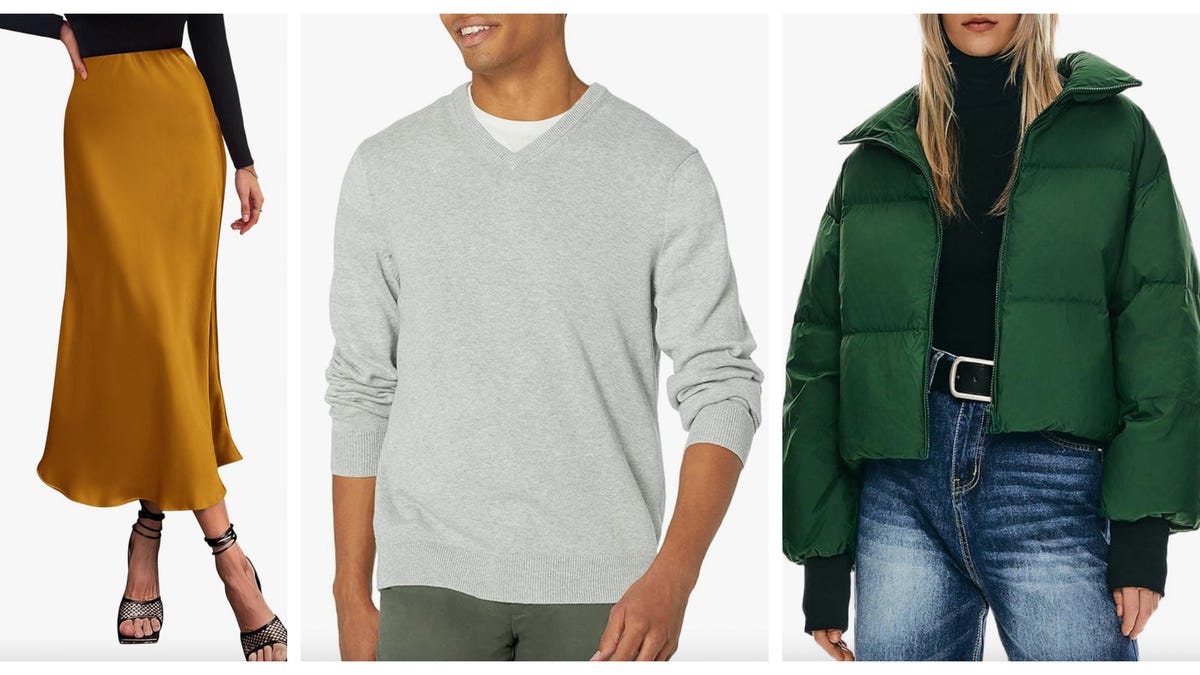Fashion
What’s Next For Sustainable Fashion?

Sustainable fashion or Eco fashion illustration vector.
Amid all the turmoil of today’s world, the need for fashion to sustain its focus on greater sustainability is as important as it’s ever been.
It’s a topic the industry has been talking about for years. And while we’ve undeniably seen progress in some areas, everyone in fashion would agree there’s still much further to go.
So what needs to happen next?
Business and sustainability go hand in hand
First, it’s about seeing the big picture. With some companies seeing pushback against terms like “ESG”, it’s critical to recognize that sustainability and business outcomes are not at odds with each other.
In fact, the two are becoming ever more intertwined and mutually reinforcing. Progress on one does not have to come at the expense of the other. Business is good for sustainability, sustainability is good for business.
Across retail, businesses are responding to the current macro-economic environment by prioritizing resilience, efficiency, and profitability. But savvy leaders recognize sustainability plays a key role in achieving those very same aims. Think, for example, of the way it helps companies make better use of data inside and outside the business, provide more stability in raw materials usage, create stronger supply chains, and so on.
We also know that companies that focus on sustainability perform better financially. And the difference can be significant. One multi-year study found, for example, that leading sustainable companies enjoyed annual profits about 50% higher than other businesses.
Joining up the dots
So far, so good. But the fact is, fashion is still struggling to fully align its business KPIs with its sustainability objectives. In particular, there’s still often a mismatch between the degree of urgency given to addressing the immediate needs of the business versus the priorities of the planet.
What’s more, as Accenture’s research has identified, there can also be a disconnect in the way fashion companies talk about these issues and the way consumers do. While both groups overwhelmingly share the same hopes, ambitions, and priorities for sustainable living, it can sometimes feel like they’re speaking different languages, creating a sense of misalignment.
The implication? Leaders in fashion — meaning the whole C-suite, not just the CEO — need to be more proactive in balancing short-term business priorities against longer-term social and environmental goals. And articulating that vision in a more human way. There is an enormous opportunity to reinvent and build resilient businesses that harness sustainability as a source of long-term and profitable growth.
Nine focus areas
How? One of the most important actions leaders can take is to step back and tackle the problem holistically. Sustainability mustn’t be sidelined by parcelling it off to a single team or C-suite champion. Rather, it needs to be a priority across every single part of the organization.
Everyone, from the CEO to the shop floor workforce, needs to buy in to the idea that sustainability is a core part of doing business — and understand what that means for their own work. Pushing power to the edge is ultimately the most effective way to drive real change.
The latest Scaling Sustainability Solutions in Fashion report does a great job of explaining what this means in practice. It looks in detail at what needs to happen in nine different “nodes” across a retail organization. Importantly, these nodes span the full range of retail operations: finance, raw materials, design, sourcing, packaging, merchandising, logistics and fulfilment, and marketing.
Examples? Among its many comprehensive recommendations, the report explains the potential for limiting waste and reducing costs by taking steps like standardizing the use of raw materials, designing for circularity and adapting packaging for different distribution channels. It also explores cutting edge concepts like dynamic inventory planning, multi-modal route optimization, and AI-powered merchandising.
Innovating real change
We already see many fashion brands innovating with sustainable products and materials. Look at Stella McCartney’s introduction of seaweed-based fabric Kelsun at her Summer 2024 runway show. This environmentally friendly fiber has a similar texture to yarn, but with a smaller carbon footprint, less water usage, and no pesticides.
With textile dying a significant global pollution problem, innovations like bacterial-based and algae-based dyes offer exciting solutions. Living Ink is a great example. This algae-based dye allows brands to switch out often-toxic black dye for a far more renewable alternative. It was recently used in a collaboration between Nike and Billie Eilish.
Then there’s recycling, which remains a real challenge for the fashion industry. But thanks to innovators like Refiberd, it’s now possible to turn this obstacle into an opportunity, by merging AI and state-of-the-art robotics to detect a garment’s composition and sorts it into its material range with laser precision. The innovation was among several to win an H&M Foundation Global Change Award earlier this year.
Scaling sustainability
What these examples show is that fashion has the potential, the innovation, and the drive to help us achieve a more sustainable and resilient future. It’s why, despite the uncertainty of the world today, fashion leaders can still grasp this moment to really move the needle on sustainability.
It’s about recognizing that sustainability, profitability, responsibility, and resilience are not competing priorities, but mutually dependent objectives. And that, only when sustainability is embedded in every part of the retail value chain can we make real progress.








/cdn.vox-cdn.com/uploads/chorus_asset/file/24435784/tokyostrava.jpg)
